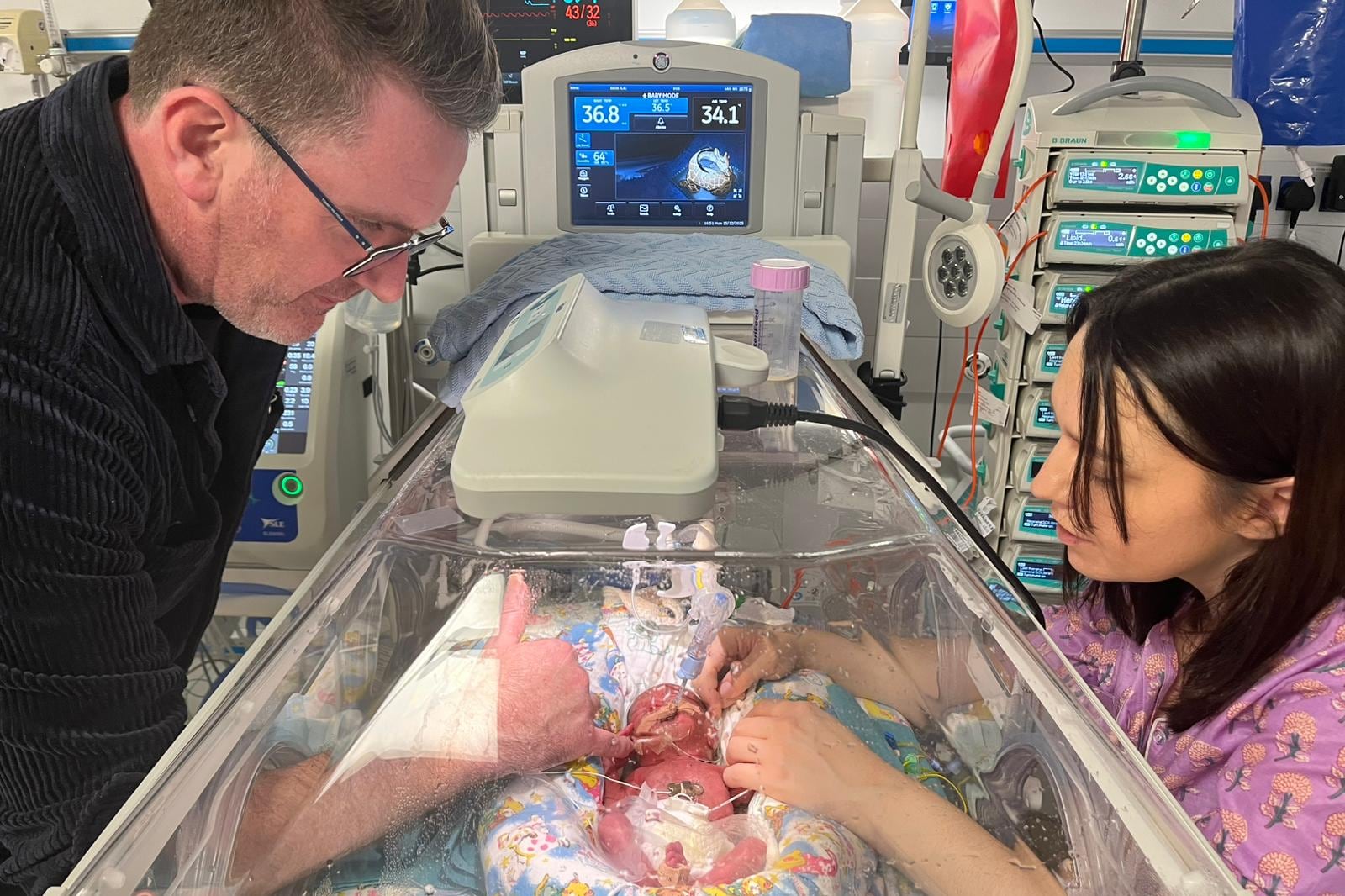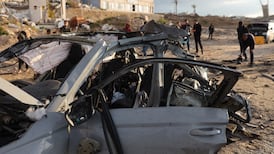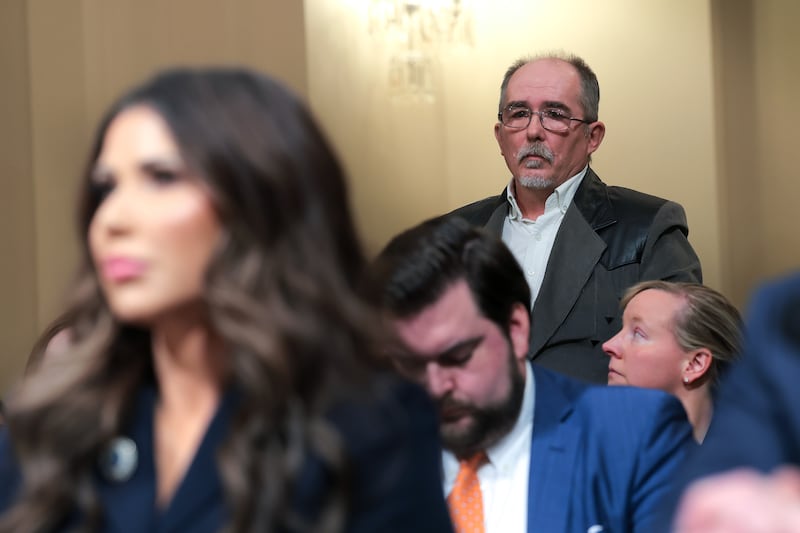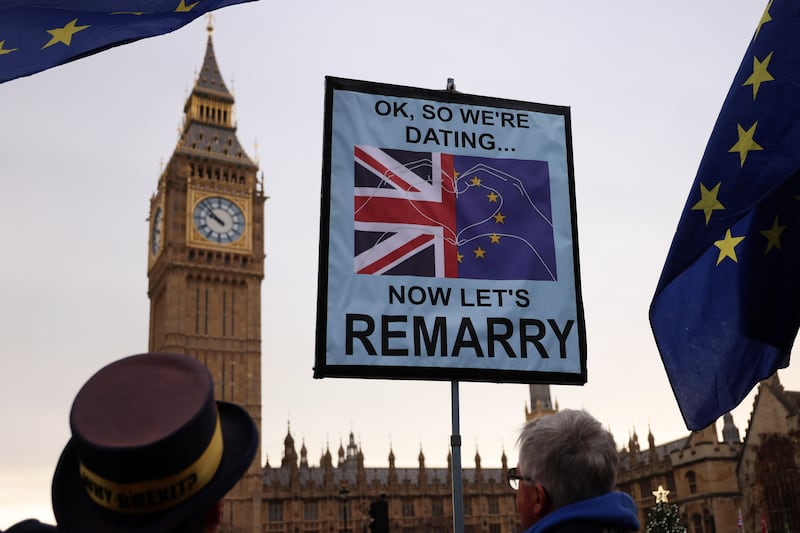The smell is overpowering as a group of Israeli soldiers and volunteers open the doors of the refrigerated shipping containers.
On each side of the containers are steel structures, four shelves high and six rows deep. Lying on them are black-and-white plastic bags filled with the bodies of victims of Hamas, the Islamist militant group which spearheaded an unprecedented and bloody operation from Gaza into southern Israel on October 7th which has profoundly shaken Israeli society.
An Israeli official at the base estimates that about 30 bodies are kept in each container and overall 900 bodies are being stored at the Shura military base in Ramla city when The Irish Times visits on October 13th. Members of the press are shown inside three of the shipping containers storing bodies.
The Israeli Defence Forces (IDF) is normally only responsible for the bodies of soldiers. “We are now dealing also with civilians because of the scale here,” says Lieut Col Richard Hecht, the IDF’s international spokesperson. Approximately 1,300 people are estimated to have been killed on October 7th.
READ MORE
Some missing people have still not been confirmed dead. “I get phone calls from mothers and sisters, and brothers and fathers, and they say to me: where’s my son, and I say: I can’t tell, I don’t know yet,” says one Israeli soldier at the base, whose name is not published in line with security protocol.
“It’s been very hard to see this,” says Levi Wilhelm, a volunteer with Zaka, a community-based network of rescue teams located across Israel. Since the initial Hamas attack, Zaka volunteers have been collecting bodies from towns and kibbutzim in southern Israel and ensuring the treatment of the dead is in keeping with Jewish law and rabbinical advice.
[ Fears of anti-Semitism in the US in wake of Hamas attack on IsraelOpens in new window ]
[ White House gives full backing to Israel following Hamas attackOpens in new window ]
An Israeli-American soldier from Israel’s National Emergency Management Authority says he had been redeployed to the Shura military base to assist with collecting and identifying the bodies of victims. He explains the identification process, which normally starts with fingerprinting – “That’s the easiest way to identify them”, he adds.
“A lot of people have given a fingerprint at some point in their life,” he explains. “Anyone who’s been through the army in recent decades has gone through it – fortunately, that’s a good portion of them here. If anyone has been arrested – probably a small portion of many of the people here.
“And then there’s biometric identity cards and passports – anyone who has gone through the process [for those] also gets fingerprinted,” he continues. “If it doesn’t come up as a match in the fingerprint database. Then they go on to DNA and teeth, there’s different ways to do forensics that they’re able to use here.” A tent has been erected at the military base for DNA testing to be conducted on site.
The main identification issues are with the bodies of children and where bodies have been burned or badly mutilated. The bodies in the shipping containers remained covered while the press visited the military base. Hecht said: “We won’t be like Hamas and show you our dead bodies. That’s not what the Jewish people do.”
The international IDF spokesperson continued: “I’m using all my assets within my small unit to mobilise as much data to the world. Why? Because I know that from tomorrow the world is going to call us war criminals.”
[ Israel’s call for civilians to flee Gaza is ‘deeply dangerous’, Tánaiste saysOpens in new window ]
Earlier that day, the Israeli authorities had issued an order and distributed pamphlets by air telling the local population in the northern half of Gaza – an estimated 1.1 million Palestinians – to evacuate to the southern half of the besieged territory along two evacuation routes they had identified as safe. The UN and human rights NGOs criticised the evacuation order and said it was not possible to carry out such a large movement of people safely in such a short time frame.
“We are now striking severely in Gaza… We’re telling the people to move and the people are not moving. They [Hamas] are saying don’t move – and that’s how people get killed,” says Hecht. “We do not attack children. Hamas uses their children and families and civilians as human shields – we don’t do that.”
After speaking to press, Hecht shouted across the military base: “We have to leave. We have to let them go back to work. There are families waiting. For every man in here, there’s a family.”
A few hours later, a convoy of Palestinians fleeing from northern Gaza was hit by an aerial strike, leaving 70 dead, according to Hamas. Multiple news outlets including the BBC and the Financial Times have since confirmed that the strike occurred on Salah-al-Din Street, located along one of the two evacuation routes identified as safe. The IDF denied carrying out the attack and said Hamas was responsible, who in turn denied they held any responsibility.
In an article outlining its investigation, the Financial Times said: “While assertions have been made by both sides about the incident and death toll, the available evidence is less clear. However, analysis of the video footage rules out most explanations aside from an Israeli strike.”




















